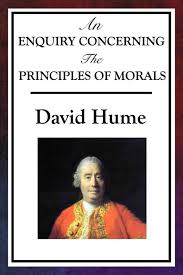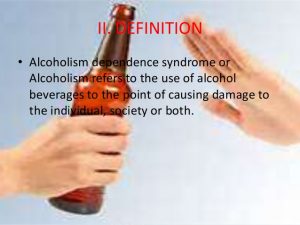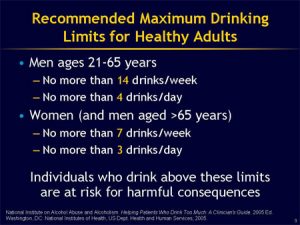
Reason Versus Sentiment:
There has been a controversy started of late, much better worth examination, concerning the general foundation of morals; whether they be derived from reason, or from sentiment; whether we attain the knowledge of them by a chain of argument and induction, or by an immediate feeling and finer internal sense; whether, like all sound judgment of truth and falsehood, they should be the same to every rational intelligent being; or whether, like the perception of beauty and deformity, they be founded entirely on the particular fabric and constitution of the human species.
The ancient philosophers, though they often affirm, that virtue is nothing but conformity to reason, yet, in general, seem to consider morals as deriving their existence from taste and sentiment. On the other hand, our modern enquirers, though they also talk much of the beauty of virtue, and deformity of vice, yet have commonly endeavored to account for these distinctions by metaphysical reasonings, and by deductions from the most abstract principles of the understanding. Such confusion reigned in these subjects, that an opposition of the greatest consequence could prevail between one system and another, and even in the parts of almost each individual system; and yet no body, till very lately, was ever sensible of it.
The Case for Reason:
It must be acknowledged, that both sides of the question are susceptible of specious arguments. Moral distinctions, it may be said, are discernible by pure reason: Else, whence the many disputes that reign in common life, as well as in philosophy, with regard to this subject: The long chain of proofs often produced on both sides; the examples cited, the authorities appealed to, the analogies employed, the fallacies detected, the inferences drawn, and the several conclusions adjusted to their proper principles. Truth is disputable; not taste: What exists in the nature of things is the standard of our judgment; what each man feels within himself is the standard of sentiment. Propositions in geometry may be proved, systems in physics may be controverted; but the harmony of verse, the tenderness of passion, the brilliancy of wit, must give immediate pleasure. No man reasons concerning another’s beauty; but frequently concerning the justice or injustice of his actions. In every criminal trial the first object of the prisoner is to disprove the facts alleged, and deny the actions imputed to him: The second to prove, that, even if these actions were real, they might be justified, as innocent and lawful. It is confessedly by deductions of the understanding, that the first point is ascertained: How can we suppose that a different faculty of the mind is employed in fixing the other?
The Case For Sentiment:
On the other hand, those who would resolve all moral determinations into sentiment, may endeavor to show, that it is impossible for reason ever to draw conclusions of this nature. To virtue, say they, it belongs to be amiable, andvice odious. This forms their very nature or essence. But can reason or argumentation distribute these different epithets to any subjects, and pronounce before-hand, that this must produce love, and that hatred? Or what other reason can we ever assign for these affections, but the original fabric and formation of the human mind, which is naturally adapted to receive them?
The end of all moral speculations is to teach us our duty; and, by proper representations of the deformity of vice and beauty of virtue, beget correspondent habits, and engage us to avoid the one, and embrace the other. But is this ever to be expected from inferences and conclusions of the understanding, which of themselves have no hold of the affections, or set in motion the active powers of men? They discover truths: But where the truths which they discover are indifferent, and beget no desire or aversion, they can have no influence on conduct and behaviour. What is honourable, what is fair, what is becoming, what is noble, what is generous, takes possession of the heart, and animates us to embrace and maintain it. What is intelligible, what is evident, what is probable, what is true, procures only the cool assent of the understanding; and gratifying a speculative curiosity, puts an end to our researches.
Extinguish all the warm feelings and prepossessions in favour of virtue, and all disgust or aversion to vice: Render men totally indifferent towards these distinctions; and morality is no longer a practical study, nor has any tendency to regulate our lives and actions.
The Limited Role of Reason:
These arguments on each side (and many more might be produced) are so plausible, that I am apt to suspect, they may, the one as well as the other, be solid and satisfactory, and that reason and sentiment concur in almost all moral determinations and conclusions. The final sentence, it is probable, which pronounces characters and actions amiable or odious, praise-worthy or blameable; that which stamps on them the mark of honour or infamy, approbation or censure; that which renders morality an active principle, and constitutes virtue our happiness, and vice our misery: It is probable, I say, that this final sentence depends on some internal sense or feeling, which nature has made universal in the whole species. For what else can have an influence of this nature? But in order to pave the way for such a sentiment, and give a proper discernment of its object, it is often necessary, we find, that much reasoning should precede, that nice distinctions be made, just conclusions drawn, distant comparisons formed, complicated relations examined, and general facts fixed and ascertained.
Some species of beauty, especially the natural kinds, on their first appearance, command our affection and approbation; and where they fail of this effect, it is impossible for any reasoning to redress their influence, or adapt them better to our taste and sentiment. But in many orders of beauty, particularly those of the finer arts, it is requisite to employ much reasoning, in order to feel the proper sentiment; and a false relish may frequently be corrected by argument and reflection. There are just grounds to conclude, that moral beauty partakes much of this latter species, and demands the assistance of our intellectual faculties, in order to give it a suitable influence on the human mind.
Arguments Against Other Roles of Reason in Morality:
This partition between the faculties of understanding and sentiment, in all moral decisions, seems clear from the preceding hypothesis. But I shall suppose that hypothesis false: It will then be requisite to look out for some other theory, that may be satisfactory; and I dare venture to affirm, that none such will ever be found, so long as we suppose reason to be the sole source of morals. To prove this, it will be proper to weigh the five following considerations.
Approval as Not a Judgment About Fact Or Relations:
It is easy for a false hypothesis to maintain some appearance of truth, while it keeps wholly in generals, makes use of undefined terms, and employs comparisons, instead of instances. This is particularly remarkable in that philosophy, which ascribes the discernment of all moral distinctions to reason alone, without the concurrence of sentiment. It is impossible that, in any particular instance, this hypothesis can so much as be rendered intelligible; whatever specious figure it may make in general declamations and discourses. Examine the crime of ingratitude, for instance; which has place, wherever we observe good-will, expressed and known, together with good-offices performed, on the one side, and a return of ill-will or indifference, with ill-offices or neglect on the other: Anatomize all these circumstances, and examine, by your reason alone, in what consists the demerit or blame. You never will come to any issue or conclusion.
Reason Judges Either of matters or Fact or Relations:
Enquire then, first, where is that matter of fact, which we here call crime; point it out; determine the time of its existence; describe its essence or nature; explain the sense or faculty, to which it discovers itself. It resides in the mind of the person, who is ungrateful. He must, therefore, feel it, and be conscious of it. But nothing is there, except the passion of ill-will or absolute indifference. You cannot say, that these, of themselves, always, and in all circumstances, are crimes. No: They are only crimes, when directed towards persons, who have before expressed and displayed good-will towards us. Consequently, we may infer, that the crime of ingratitude is not any particular individual fact; but arises from a complication of circumstances, which, being presented to the spectator, excites the sentiment of blame, by the particular structure and fabric of his mind.
No New Fact Is Discovered:
When a man, at any time, deliberates concerning his own conduct (as, whether he had better, in a particular emergence, assist a brother or a benefactor), he must consider these separate relations, with all the circumstances and situations of the persons, in order to determine the superior duty and obligation: And in order to determine the proportion of lines in any triangle, it is necessary to examine the nature of that figure, and the relation which its several parts bear to each other. But notwithstanding this appearing similarity in the two cases, there is, at bottom, an extreme difference between them. A speculative reasoner concerning triangles or circles considers the several known and given relations of the parts of these figures; and thence infers some unknown relation, which is dependent on the former. But in moral deliberations, we must be acquainted, before-hand, with all the objects, and all their relations to each other; and from a comparison of the whole, fix our choice or approbation. No new fact to be ascertained: No new relation to be discovered. All the circumstances of the case are supposed to be laid before us, ere we can fix any sentence of blame or approbation. If any material circumstance be yet unknown or doubtful, we must first employ our enquiry or intellectual faculties to assure us of it; and must suspend for a time all moral decision or sentiment. While we are ignorant, whether a man were aggressor or not, how can we determine whether the person who killed him, be criminal or innocent? But after every circumstance, every relation is known, the understanding has no farther room to operate, nor any object on which it could employ itself. The approbation or blame, which then ensues, cannot be the work of the judgment, but of the heart; and is not a speculative proposition or affirmation, but an active feeling or sentiment. In the disquisitions of the understanding, from known circumstances and relations, we infer some new and unknown. In moral decisions, all the circumstances and relations must be previously known; and the mind, from the contemplation of the whole, feels some new impression of affection or disgust, esteem or contempt, approbation or blame.
Hence the great difference between a mistake of fact and one of right; and hence the reason why the one is commonly criminal and not the other. When OEdipus killed Laius, he was ignorant of the relation, and from circumstances, innocent and involuntary, formed erroneous opinions concerning the action which he committed. But when Nero killed Agrippina, all the relations between himself and the person, and all the circumstances of the fact, were previously known to him: But the motive of revenge, or fear, or interest, prevailed in his savage heart over the sentiments of duty and humanity. And when we express that detestation against him, to which he, himself, in a little time, became insensible; it is not, that we see any relations, of which he was ignorant; but that, from the rectitude of our disposition, we feel sentiments, against which he was hardened, from flattery and a long perseverance in the most enormous crimes. In these sentiments, then, not in a discovery of relations of any kind, do all moral determinations consist. Before we can pretend to form any decision of this kind, every thing must be known and ascertained on the side of the object or action. Nothing remains but to feel, on our part, some sentiment of blame or approbation; whence we pronounce the action criminal or virtuous.
Similarity Between Moral and Aesthetic Perception:
This doctrine will become still more evident, if we compare moral beauty with natural, to which, in many particulars, it bears so near a resemblance. It is on the proportion, relation, and position of parts, that all natural beauty depends; but it would be absurd thence to infer, that the perception of beauty, like that of truth in geometrical problems, consists wholly in the perception of relations, and was performed entirely by the understanding or intellectual faculties. In all the sciences, our mind, from the known relations, investigates the unknown. But in all decisions of taste or external beauty, all the relations are before-hand obvious to the eye; and we thence proceed to feel a sentiment of complacency or disgust, according to the nature of the object, and disposition of our organs.
Euclid has fully explained all the qualities of the circle; but has not, in any proposition, said a word of its beauty. The reason is evident. The beauty is not a quality of the circle. It lies not in any part of the line, whose parts are equally distant from a common centre. It is only the effect, which that figure produces upon the mind, whose peculiar fabric of structure renders it susceptible of such sentiments. In vain would you look for it in the circle, or seek it, either by your senses or by mathematical reasoning, in all the properties of that figure.
Attend to Palladio and Perrault, while they explain all the parts and proportions of a pillar: They talk of the cornice and frieze and base and entablature and shaft and architrave; and give the description and position of each of these members. But should you ask the description and position of its beauty, they would readily reply, that the beauty is not in any of the parts or members of a pillar, but results from the whole, when that complicated figure is presented to an intelligent mind, susceptible to those finer sensations. ’Till such a spectator appear, there is nothing but a figure of such particular dimensions and proportions: From his sentiments alone arise its elegance and beauty.
Again; attend to Cicero, while he paints the crimes of a Verres or a Catiline. You must acknowledge that the moral turpitude results, in the same manner, from the contemplation of the whole, when presented to a being, whose organs have such a particular structure and formation. The orator may paint rage, insolence, barbarity on the one side: Meekness, suffering, sorrow, innocence on the other: But if you feel no indignation or compassion arise in you from this complication of circumstances, you would in vain ask him, in what consists the crime or villainy, which he so vehemently exclaims against: At what time, or on what subject it first began to exist: And what has a few months afterwards become of it, when every disposition and thought of all the actors is totally altered or annihilated. No satisfactory answer can be given to any of these questions, upon the abstract hypothesis of morals; and we must at last acknowledge, that the crime or immorality is no particular fact or relation, which can be the object of the understanding: But arises entirely from the sentiment of disapprobation, which, by the structure of human nature, we unavoidably feel on the apprehension of barbarity or treachery.
No Distinctly Moral Relation:
Inanimate objects may bear to each other all the same relations, which we observe in moral agents; though the former can never be the object of love or hatred, nor are consequently susceptible of merit or iniquity. A young tree, which over-tops and destroys its parent, stands in all the same relations with Nero, when he murdered Agrippina; and if morality consisted merely in relations, would, no doubt, be equally criminal.
Conclusion:
Thus the distinct boundaries and offices of reason and of taste are easily ascertained. The former conveys the knowledge of truth and falsehood: The latter gives the sentiment of beauty and deformity, vice and virtue. The one discovers objects as they really stand in nature, without addition or diminution: The other has a productive faculty, and gilding or staining all natural objects with the colours, borrowed from internal sentiment, raises, in a manner, a new creation. Reason, being cool and disengaged, is no motive to action, and directs only the impulse received from appetite or inclination, by showing us the means of attaining happiness or avoiding misery: Taste, as it gives pleasure or pain, and thereby constitutes happiness or misery, becomes a motive to action, and is the first spring or impulse to desire and volition. From circumstances and relations, known or supposed, the former leads us to the discovery of the concealed and unknown: After all circumstances and relations are laid before us, the latter makes us feel from the whole a new sentiment of blame or approbation. The standard of the one, being founded on the nature of things, is eternal and inflexible, even by the will of the Supreme Being: The standard of the other, arising from the internal frame and constitution of animals, is ultimately derived from that Supreme Will, which bestowed on each being its peculiar nature, and arranged the several classes and orders of existence.




 Studies have shown that
Studies have shown that  Moral distress can also cause strong feelings of stress amongst healthcare professionals. This psychological state occurs when a discrepancy occurs between the action that an individual takes, and the action that an individual feels they should have taken (Fitzpatrick and Wallace, 2011). This may occur if a nurse feels that a patient should receive an intervention in order to experience best possible care, but is unable to deliver it, for example due to organisational policy constraints, or a lack of support from other members of staff (Wojtowicz et al., 2014). For example, a nurse may be providing end of life care to a patient who has recently had an unplanned
Moral distress can also cause strong feelings of stress amongst healthcare professionals. This psychological state occurs when a discrepancy occurs between the action that an individual takes, and the action that an individual feels they should have taken (Fitzpatrick and Wallace, 2011). This may occur if a nurse feels that a patient should receive an intervention in order to experience best possible care, but is unable to deliver it, for example due to organisational policy constraints, or a lack of support from other members of staff (Wojtowicz et al., 2014). For example, a nurse may be providing end of life care to a patient who has recently had an unplanned 
 It is safe to declare that
It is safe to declare that 

You must be logged in to post a comment.